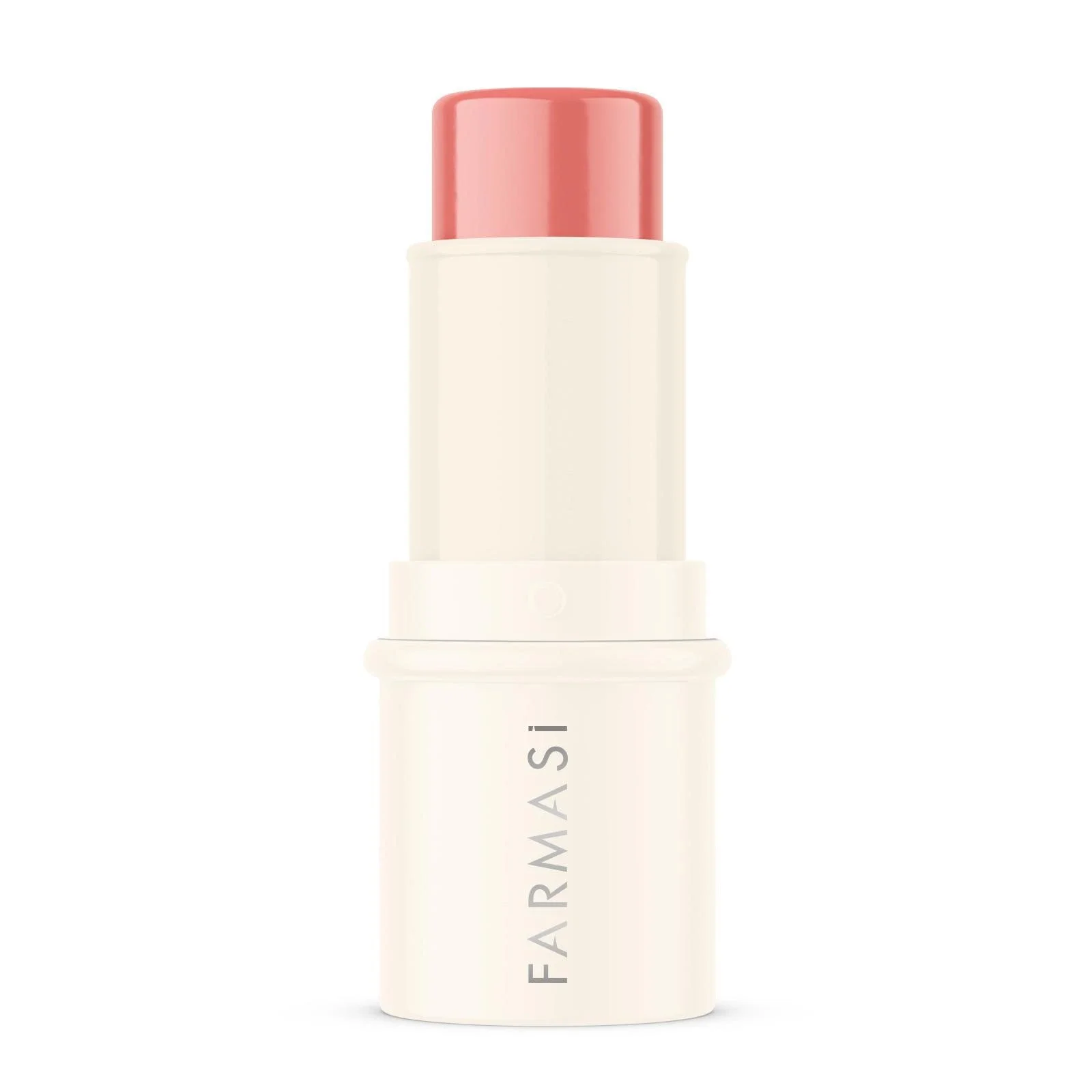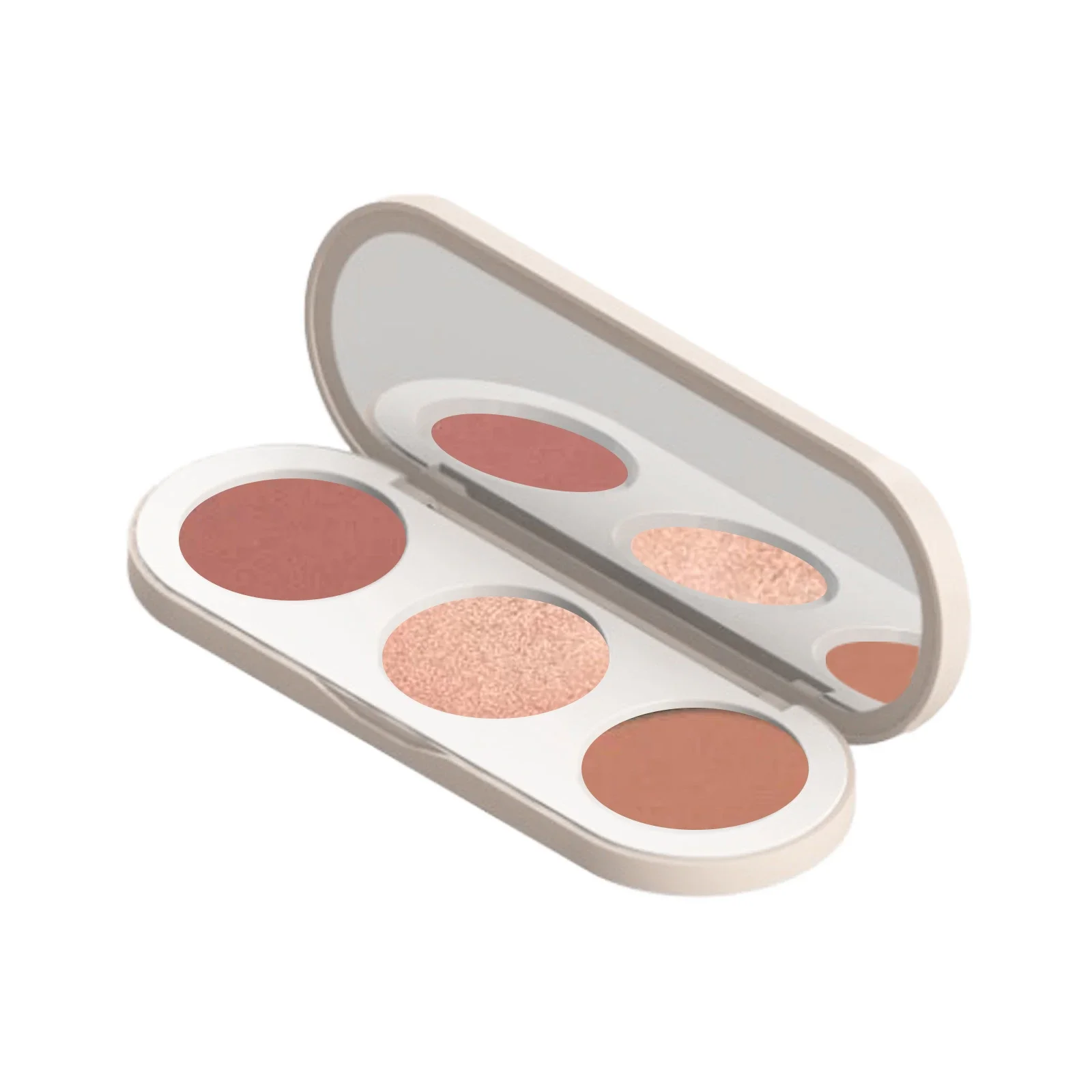Best Blush for Acne Prone Skin (with Recommendations)
This post contains affiliate links.
When you have acne-prone skin, makeup can feel like a love-hate relationship. On one hand, a little color on the cheeks can completely transform your makeup routine—giving that healthy, flushed glow we all love. On the other hand, the wrong formula can clog pores, trigger future breakouts, or highlight the texture of your complexion in ways you definitely didn’t sign up for.
I’ve been there—standing in the makeup aisle, overwhelmed by the lot of blushes on the shelves, wondering which one is the best blush for my skin. The good news? There are so many safe, non-comedogenic blush options out there now that can give you a natural glow without making you worry about cystic breakouts later.
This guide will walk you through the best way to choose blush for acne-prone skin, different variety of formulas(powder, liquid, cream), expert tips for application, and specific product recommendations—including some blushes from Farmasi that fit right in with what dermatologists and assistant makeup artists recommend.
Grab your iced coffee (or ice cream, no judgment!), and let’s talk blush.
Why Choosing the Right Blush Matters for Acne-Prone Skin
If you’ve ever noticed breakouts after trying a new makeup product, you’re not alone. It’s a super common placeproblem for different people with sensitive skin and oily skin. Blush is applied directly on the apples of my cheeks—prime real estate for acne—so ingredients and formulas matter a lot.
The right blush can:
Brighten up dull skin for a naturally rosy look
Work with your skin type (whether you’re dry, oily, or combination skin)
Blur the look of atrophic scars for smoother-looking poreless skin
Avoid triggering irritation or clogged pores
Boost confidence, which let’s be real, does wonders for mental health
The bad thing? Using the wrong formula (say, a blush heavy in mineral oil or coconut oil) can clog pores. Sometimes it’s an isolated incident, but other times, it can lead to more future breakouts. That’s why medical experts and dermatologists recommend looking for non-comedogenic ingredients, oil-free, and skin-friendly formulas.
The Best Types of Blush Formulas for Acne-Prone Skin
Blush comes in many forms, and the best choice depends on your personal preferences, skin type, and the overall effect you’re going for. Here’s a breakdown:
1. Powder Blushes
Powder blush formulas are often considered a good option for oily skin or anyone dealing with excess oil throughout the day. They give a soft, buildable color, often with a matte finish that helps absorb shine.
Best for: Oily skin, combination skin, and anyone who wants a long-lasting look.
Pros: Lightweight, easy to blend, doesn’t add more oil to the skin.
Cons: Can cling to dry patches if you have dry skin.
Tip: Use a fluffy brush and apply a small amount—don’t overload, or you’ll end up with thick splotches of colorinstead of that seamless flush.
2. Liquid Blushes
Thanks to TikTok – make tutorials, liquid blushes have gone viral. They give that dewy finish and blend beautifully into the skin, almost like a stain.
Best for: Dry skin, sensitive skin, or if you love a glowy finish.
Pros: Blendable, natural, can double as lip tints (hello lip balms).
Cons: If you use too much product, it can overwhelm the skin. Start with a pea-sized amount or even a second dot to build color slowly.
Example: The beloved Glossier Cloud Paint and Flower Beauty Blush Bomb are cult favorites because of their lightweight formula and natural beauty effect.
3. Cream Blushes
Cream blushes sit somewhere between powder and liquid. A cream formula often gives a more natural look, melting into skin so it looks like a bridge of color rather than makeup sitting on top.
Best for: Dry skin or fair skin that needs just a touch of tint.
Pros: Hydrating (sometimes infused with hyaluronic acid, vitamin C, or even cocoa butter). They’re amazing for a photo shoot when you want that seamless makeup makeup look.
Cons: Some texture of cream blush can emphasize atrophic scars or slide off if you have oily skin.
Great option: Farmasi Cream Blushes
Ingredients to Look For (and Avoid)
When picking blush for acne-prone skin, ingredients are just as important as formula.
Look For:
Non-comedogenic ingredients (to prevent clogged pores)
Oil-free gels or lightweight bases
Skin-loving extras like hyaluronic acid, vitamin C, or salicylic acid (some blushes have skincare benefits!)
Avoid (if possible):
Mineral oil and coconut oil (can be pore-clogging)
Heavy fragrances (can irritate sensitive skin)
Super waxy formulas that trap excess oil
Remember: everyone’s skin reacts differently, so always patch test a new blush the first time you try it.
Blush Application Tips for Acne-Prone Skin
Even the best blush won’t work if you don’t apply it the right way. Here are some pro tips from assistant makeup artistsand dermatologists:
Prep with Skincare Products
Always start with clean, moisturized skin using gentle skincare products. A hydrating base helps blush blend evenly over texture.Use the Right Tools
For powders: Use brush applicator with a light hand.
For liquids: Try fingers or a damp sponge for a seamless finish.
For creams: Tap with fingertips to melt into skin.
Less is More
Always start with a small amount. You can add, but taking away too much product is tricky.Placement is Key
The classic “apples of your cheeks” application is a best friend move for most people. For a lifted look, blend slightly upward toward the temples.Match to Your Skin Tone
Fair skin: soft pinks, peach, peach coral
Medium skin: warm rose, peachy pink NARS blush dupes
Deep skin: bold berry, terracotta, bolder look shades
Recommended Blushes for Acne-Prone Skin
Now for the fun part—let’s talk actual blush recommendations that check the boxes for safe blush, non-comedogenic blush, and flattering shades.
Farmasi Blushes
Farmasi has a few options that are a great option for acne-prone skin without being overwhelming or heavy.
Farmasi Terracotta Blush – A powder formula that gives a radiant but controlled glow. It’s a best option if you’re worried about excess oil but still want a luminous finish.
Farmasi Creamy Blush Stick – Their cream formula is easy to blend and has a lightweight formula that doesn’t feel heavy. A good option for dry skin looking for a natural glow.
Why I like them: They’re non-comedogenic, long-lasting formula, and they don’t require much product to get beautiful color payoff. It feels like the best friend in your makeup routine—reliable, flattering, and easy.
Other Beloved Blushes for Acne-Prone Skin
Glossier Cloud Paint – The cult-favorite BYO blush that gives a sheer wash of color and blends like a dream. Perfect for the makeup makeup look.
Flower Beauty Blush Bomb – A budget-friendly liquid blush that’s been a best choice on TikTok for its dewy finish.
Danessa Myricks Vision Flush – A professional-grade cream blush loved by lead makeup artists for its blendability and versatility.
Innisfree Smart Drawing Blusher – A safe blush option for sensitive skin with a lightweight formula.
Blush and Mental Health
This might sound deep for a makeup products blog post, but hear me out. When you’re struggling with cystic breakoutsor atrophic scars, looking in the mirror can feel discouraging. Sometimes, swiping on blush isn’t just about the overall effect of looking good—it’s about feeling good.
That soft pop of pink or coral can make you look more awake, more alive, and sometimes that tiny boost is exactly what your mental health needs. Think of blush as that best friend who always shows up when you need her.
Common Questions About Blush and Acne
Q: Can blush really cause acne?
A: Yes, if it contains pore-clogging ingredients or if you don’t remove it properly. But choosing non-comedogenic ingredients makes a huge difference.
Q: Should I skip blush if I’m breaking out?
A: Not necessarily! Just use a small amount of a safe blush with non-comedogenic ingredients, and avoid piling makeup directly onto active breakouts.
Q: Powder vs. liquid—what’s the best choice?
A: For oily skin, powders often win. For dry skin, creams and liquids are your best friend. But it’s all about personal preferences and finding the right products.
Final Thoughts
Finding the best blush for acne-prone skin is all about balance—picking formulas that flatter your natural skin tone, avoiding ingredients that cause breakouts, and applying with a light hand for the best overall effect.
Whether you go for a powder formula for a matte finish, a cream blush for a more natural look, or a liquid blush for that TikTok-inspired glowy finish, there’s a best option out there for you.
Personally, I keep both a Farmasi Terracotta Blush (powder) and a Farmasi Creamy Blush Stick (cream) in my bag, because they’re versatile, gentle, and don’t cause the dreaded future breakouts.
At the end of the day, blush isn’t just makeup—it’s confidence in a compact. It’s your quick ticket to a flushed glow, a poreless skin illusion, and maybe even a smile when you catch yourself in the mirror. And that’s something worth finding the right blush for.
Reminder: I’m not offering medical advice—always check with medical experts if you have concerns about your skin or active acne treatments. But when it comes to the best way to add color to your cheeks? Blush can be your secret weapon, your little mood-lifter, and your best friend in the beauty bag.


